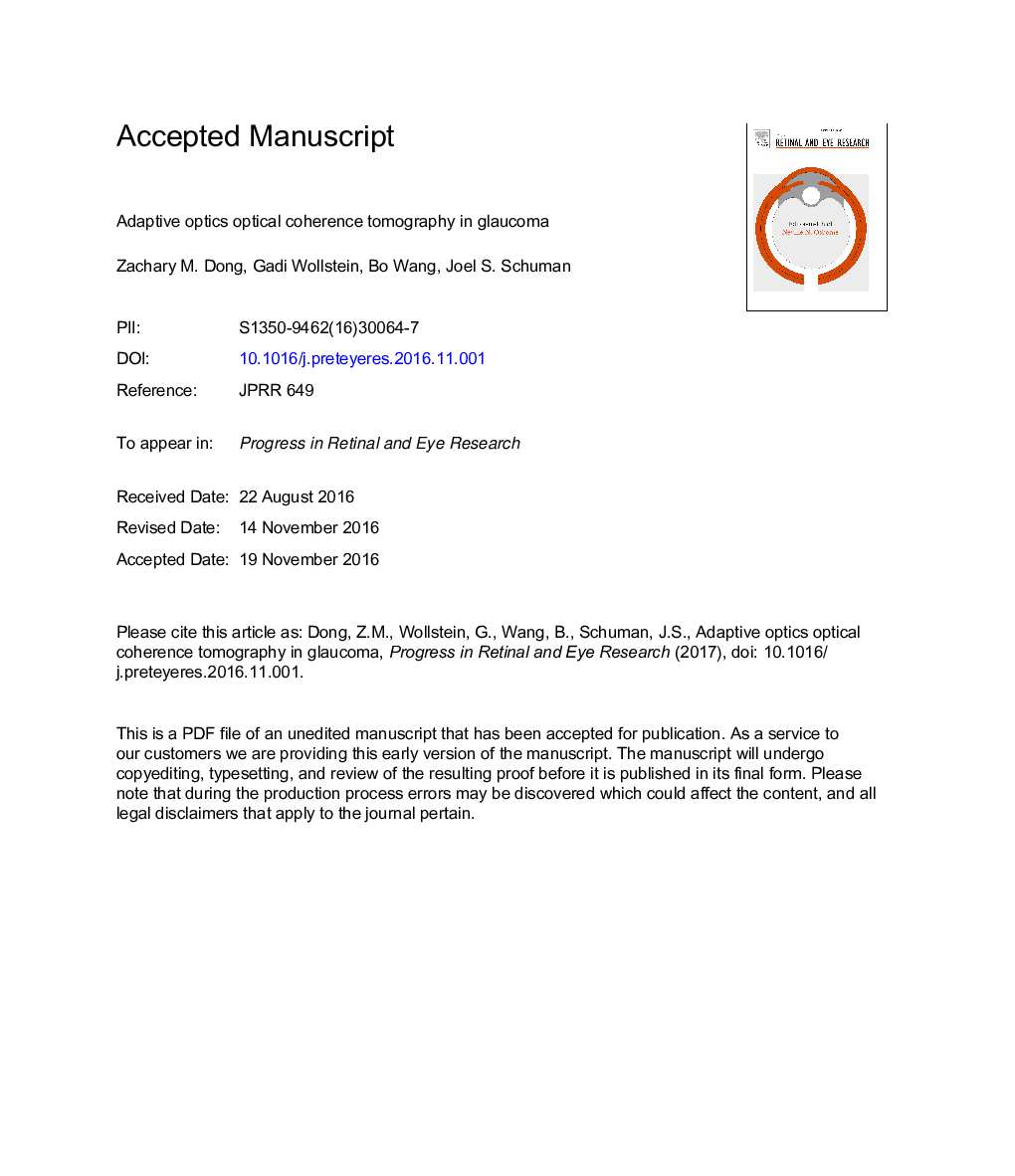| Article ID | Journal | Published Year | Pages | File Type |
|---|---|---|---|---|
| 5705690 | Progress in Retinal and Eye Research | 2017 | 38 Pages |
Abstract
Since the introduction of commercial optical coherence tomography (OCT) systems, the ophthalmic imaging modality has rapidly expanded and it has since changed the paradigm of visualization of the retina and revolutionized the management and diagnosis of neuro-retinal diseases, including glaucoma. OCT remains a dynamic and evolving imaging modality, growing from time-domain OCT to the improved spectral-domain OCT, adapting novel image analysis and processing methods, and onto the newer swept-source OCT and the implementation of adaptive optics (AO) into OCT. The incorporation of AO into ophthalmic imaging modalities has enhanced OCT by improving image resolution and quality, particularly in the posterior segment of the eye. Although OCT previously captured in-vivo cross-sectional images with unparalleled high resolution in the axial direction, monochromatic aberrations of the eye limit transverse or lateral resolution to about 15-20 μm and reduce overall image quality. In pairing AO technology with OCT, it is now possible to obtain diffraction-limited resolution images of the optic nerve head and retina in three-dimensions, increasing resolution down to a theoretical 3 μm3. It is now possible to visualize discrete structures within the posterior eye, such as photoreceptors, retinal nerve fiber layer bundles, the lamina cribrosa, and other structures relevant to glaucoma. Despite its limitations and barriers to widespread commercialization, the expanding role of AO in OCT is propelling this technology into clinical trials and onto becoming an invaluable modality in the clinician's arsenal.
Related Topics
Life Sciences
Neuroscience
Sensory Systems
Authors
Zachary M. Dong, Gadi Wollstein, Bo Wang, Joel S. Schuman,
